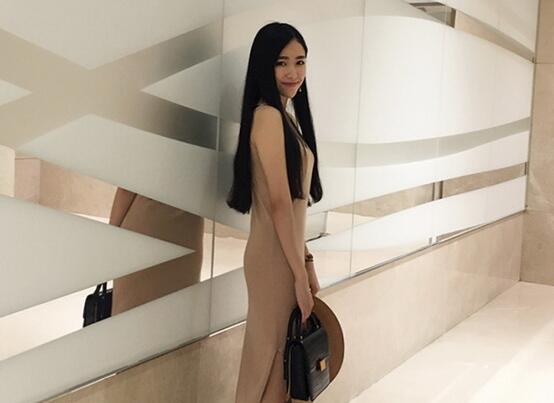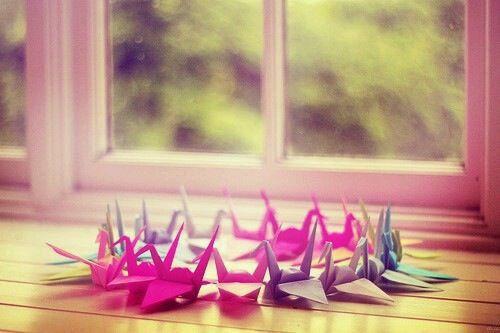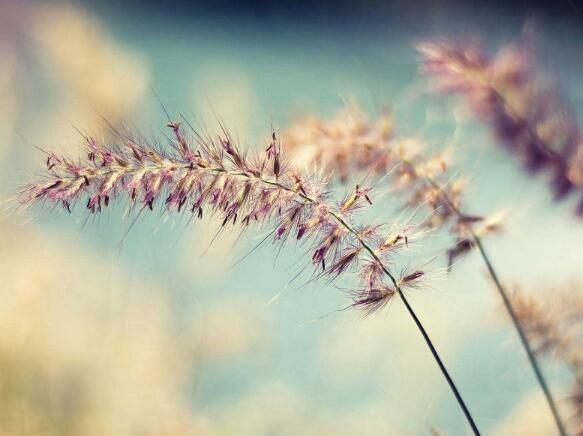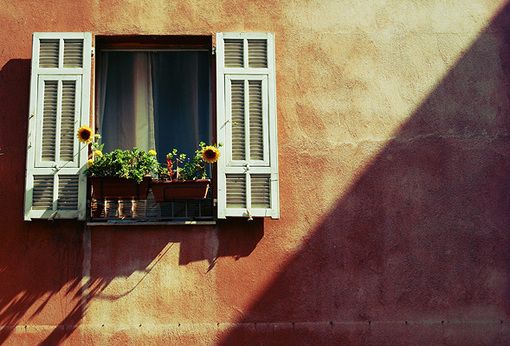
我要北京天坛的导游词 急急急急急 350字以下
各位游客,你们好!今天我们要参观的是以前皇帝祭天的地方——天坛。
天坛是明朝永乐皇帝建成的祭天圣坛,主建筑是大祀殿,也就是今天的祈年殿。
天坛有外坛墙和内坛墙,北圆南方,寓意天圆地方。
乾隆年间,将大祀殿改为现在的祈年殿,将屋顶瓦片改成蓝色的琉璃瓦,形成了今天我们看到的这个世界上最大的祭天建筑群。
这一祭天圣地,在1860年遭到了英法联军的洗劫,1900年又遭到八国联军的蹂躏。
新中国成立以后,这里成了著名的旅游景点,来这里的除了旅游者,还有很多健身的人们。
现在就让我们沿着当年皇帝登坛的路线开始游览。
现在我们是沿着天坛建筑的中轴线在向南行进,将要看到的就是古代皇帝祭天的圜丘坛。
圜丘有两道围护墙,外方内圆,符合天圆地方的说法。
每道墙都有四组门,大家可以注意到,门的大小都不一样,这是因为中门是上帝专用的,所以高大;皇帝只能从左侧的门进入;而其他的官员只能从右边最小的门通过。
来到圜丘坛下,我们马上要开始登坛了,不过要请您留心数一数,每层坛面都有多少台阶。
到了最高层,大家会发现,坛上所有的台阶数,都是九或者九的倍数。
这些难道都是巧合么?当然不是,因为古人认为九是极阳数,所以工匠们便用这个数字来赋予圜丘坛“崇高”之意。
说完了神坛的奇妙,我再给您介绍一下祭天大典的盛况。
到了每年的冬至,皇帝就要在这里祭天。
在这个典礼上,需要特别提到的是皇帝恭读祝文所站立的地方,就是这块天心石。
它是天坛三大声学现象之一。
在这里朗读的时候声音特别洪亮,各位游客不妨体验一下,也像当年的皇帝一样,向上天诉说自己美好的愿望。
现在咱们继续沿着中轴线行走,面前的建筑叫做天库,它的正殿就是皇穹宇。
皇穹宇三个字也分别代表了“至高无上”“天”“宇宙”的意思,更加显示出它的神圣和至尊。
这组建筑不仅十分精美,而且还有回音壁和三音石,这和刚才我们说的“天心石”合称天坛三大声学现象。
回音壁就是皇穹宇的外墙,围墙十分平滑,可以传声,在传递途中对声音损失极小,只要对着墙说话,就算相隔四五十米,见不到面,都可以清晰地听到对方说话。
三音石是皇穹宇大殿正前方的三块石头,您站在第一块石头上拍手可以听到一次回音,站在第二块石头上拍手可以听到两次,而站在第三块石头上拍手就可以听到三次回音,所以称为三音石。
在游览过了圜丘坛和皇穹宇之后,我们即将走进祈谷坛了,祈谷坛的主体建筑就是祈年殿,祈年殿是一座极具中国特色的独特建筑。
圆形尖屋顶是用蓝色的琉璃瓦覆盖,以此来象征天。
和每年的祭天一样,这里是用来祈谷的地方。
在祭祀的当天,有乐队在殿外月台上奏乐,身穿祭服的皇帝虔诚步入神殿,向牌位行大礼,祈祷上苍,然后把供品送到祈年门外焚烧,送上天宫。
现在我们从祈谷坛的东门出来,可以看到一条长廊,是祭祀时运送祭品的通道。
今天的观光游览就要结束了,在天坛的这段时光希望能成为您北京之游中的永恒记忆。
同时也请您把天坛的祝福带给您的家人朋友。
参考资料:地图团祝您一帆风顺。
北京天坛的导游词不多于200字,要说出最有特色的地方
各位朋友,现在我们来到了天坛,首先我为大家简单介绍一下,天坛是世界上现存的规模最大的古代皇家祭祀性建筑群,它是明清两代皇帝祭天、祈谷及祈雨的地方.天坛完工于公元1420年,位于紫禁城的东南方向,全园占地273公顷,是紫禁城面积的4倍。
在中轴线上有三组非常重要的建筑,自南向北依次是圜丘坛、皇穹宇及祈年殿。
另外,园中西侧有斋宫等建筑,全园遍植古松、庄严肃穆,是一处非常理想的祭祀场所。
在明代,天坛初建之时,实行天地合祭,不仅祭天,而且祭地,其位置便是今天祈年殿所在的祈谷坛上。
后来,在京城的北面设地坛,专门祭地,又在祈年殿的南侧修建了圜丘坛及皇穹宇,专门祭天,从而形成了今天的格局及规模。
1900年八国联军入侵北京,天坛也未能幸免于难。
侵略者在此胡作非为,盗走并破坏无数珍贵文物,犯下不可饶恕的罪行。
最后一个在这里祭天的人是窃国大盗袁世凯,但天不随人愿,袁某只做了83天皇帝瘾便一命归西了。
解放后,国家多次拨款重修天坛,但不再是为了祭天,而是为了给世人、给世界留下一份遗产。
1998年天坛被联合国教科文组织列为人类遗产目录。
好
下面我就带大家参观。
我自己写的!!不好告诉我!!谢谢拉~~~~~~~~~~~~~~~~~~~~~~
我是学导游的 写个月实习 谁能帮我 整个 天安门 故宫 天坛的导游词 没篇2千字以上 谢谢了
故宫词Lying at the center of Beijing the Forbidden City, called Gu Gong, in Chinese, was the imperial palace during the Ming and Qing dynasties. Now known as the Palace Museum, it is to the north of Tiananmen Square. Rectangular in shape, it is the world‘s largest palace complex and covers 74 hectares. Surrounded by a six meter deep moat and a ten meter high wall are 9,999 buildings. The wall has a gate on each side. Opposite the Tiananmen Gate, to the north is the Gate of Devine Might (Shenwumen), which faces Jingshan Park. The distance between these two gates is 960 meters, while the distance between the gates in the east and west walls is 750 meters. There are unique and delicately structured towers on each of the four corners of the curtain wall. These afford views over both the palace and the city outside. The Forbidden City is divided into two parts. The southern section, or the Outer Court was where the emperor exercised his supreme power over the nation. The northern section, or the Inner Court was where he lived with his royal family. Until 1924 when the last emperor of China was driven from the Inner Court, fourteen emperors of the Ming dynasty and ten emperors of the Qing dynasty had reigned here. Having been the imperial palace for some five centuries, it houses numerous rare treasures and curiosities. Listed by UNESCO as a World Cultural Heritage Site in 1987, the Palace Museum is now one of the most popular tourist attractions world wide.Construction of the palace complex began in 1407, the 5th year of the Yongle reign of the third emperor of the Ming dynasty. It was completed fourteen years later in 1420. It was said that a million workers including one hundred thousand artisans were driven into the long-term hard labor. Stone needed was quarried from Fangshan, a suburb of Beijing. It was said a well was dug every fifty meters along the road in order to pour water onto the road in winter to slide huge stones on ice into the city. Huge amounts of timber and other materials were freighted from faraway provinces. Ancient Chinese people displayed their very considerable skills in building the Forbidden City. Take the grand red city wall for example. It has an 8.6 meters wide base reducing to 6.66 meters wide at the top. The angular shape of the wall totally frustrates attempts to climb it. The bricks were made from white lime and glutinous rice while the cement is made from glutinous rice and egg whites. These incredible materials make the wall extraordinarily strong.Since yellow is the symbol of the royal family, it is the dominant color in the Forbidden City. Roofs are built with yellow glazed tiles; decorations in the palace are painted yellow; even the bricks on the ground are made yellow by a special process. However, there is one exception. Wenyuange, the royal library, has a black roof. The reason is that it was believed black represented water then and could extinguish fire.Nowadays, the Forbidden City, or the Palace Museum is open to tourists from home and abroad. Splendid painted decoration on these royal architectural wonders, the grand and deluxe halls, with their surprisingly magnificent treasures will certainly satisfy modern civilians. Welcome to the temple of Heaven. (After self-introduction) preserved cultural heritages of China. There are basically two kinds of visitors who come here: local pensioners who do exercises here in the morning and evening and sightseers both from home and abroad. All in all ,there are 12 million visitors very year. Now we are going to go along the route that leads to the alter. It will take roughly one hour. Mind you ,the emperor also walked along this route to pay tribute to the God of Heaven. (Along the Southern Sacred Road leading to the Circular Mound Altar) The largest group of architectures ever to be dedicated to Heaven ,the Temple of Heaven served as an exclusive altar for Chinese monarchs during the Ming and Qing dynasties. It was decreed that rulers of successive dynasties would place altars in their own capitals to worship Heaven and pray for good harvest. But why ? The ancient Chinese believed that Heaven was the supreme ruler of the universe and the fate of mankind ,and thus worshiping rites dedicated to Heaven came into being. The Heaven the ancient Chinese referred to was actually the Universe, or nature. In those days, there were specfic rites of worship. This was especially true during the Ming and Qing dynasties when elaborate ceremonies were held. The Temple of Heaven was built in 1420 during the reign of Emperor Youngle of the Ming Dynasty. Situated in the southern part of the city ,this grand set of structures covers an area of 273 hectares. To better symbolize heaven and earth ,the northern part of the Temple is circular while the southern part is square .The whole compound is enclosed by two walls, a square wall outside a round one. The outer area is characterized by suburban scenery, while the inner part is used for sacrifices. The inner enclosure consists of the Hall of Prayer for Good Harvest and the Circular Mound Altar. (Along the Imperial Passage leading from the Southern Lattice Star Gate in front of the Circular Mound Altar) the Circular Mound Altar is enclosed by two walls ,each containing four groups of Southern Lattice Star Gate, each in turn consisting of three doors, with 24 marble doors altogether. Standing on the passage facing north, you will notice that with each pair of doors on is narrower than the other. This reflects the feudal hierarchy: the wider door was reserved for monarchs, while the narrower one was used by courtiers. On the day of the ceremony ,the emperor would don his ritual costume and be ushered in by the official in charge of religious affairs. He ascended the three terraces in the forefront to pay tribute at the alter. (Atop the Circular Mound Alter) we are now on the top terrace of the Altar, or the third terrace .Each terrace has a flight of 9 steps. At the center of this terrace lies a round stone surrounded by 9 steps. At the center of this terrace lies a round stone surrounded by 9 concentric rings of stone. The number of stones in the first ring is 9, in the second ,18, up to 81 in the 9th ring. Even the number of carved balustrades on these terraces is a multiplee of 9. But why? According to ancient Chinese philosophy, yin and yang were two opposing factors. Heaven and the odd numbers belonged to yang while the Earth and even numbers belonged to yin. Nine was the largest heavenly number accessible to man . What is more, the ancient people also believed that heaven consisted of nine layers and that the emperor s abode was on the uppermost tier. Once more look at the round stone in the center. The upper terrace is nine zhang (a Chinese unit of length, one zhang equals 3.3 meters ) in circumference ,while the middle is 15 zhang, the lower, 21 zhang. Classified as yang numbers, the sum of these numerals is 45 zhang which was meant to symbolized success. What is more, by applying the concept of odd numbers and strengthening nine and its multiples, the concept of heaven was thus illustrated and realized . The concept of nine will also be mentioned when we visit some other buildings. Now I will give you a brief account of what happened here annually on the Inter Solstice. The memorial tablet dedicated to Heaven would be set up on the north side of the terrace, while tablets dedicated to the emperor `s ancestors would be enshrined on the flanks. The service would begin around 4 o` clock in the morning. All of the lanterns would be lit .In the foreground, a sacrificial calf is being barbecued. On the square in front of the altar, the emperor, under heavy escort of nearly a thousand courtiers, princes of royal blood ,musicians, dancers and uniformed soldiers, would slowly ascend the altar to offer sacrifice and pray in honor of Heaven. When the service drew to a close ,the sacrifice offered in front of the memorial tablets would be incinerated .All of participants would watch the thick smoke rise upward as if they were seeing God off .Music and dancing would follow .In the end ,the emperor would return to the Forbidden City secure in the belief that he would be blessed and protected by Heaven until the next winter Solstice. It is interesting to note that ,the stone in the very middle of the altar was of major importance ,since it was where the emperor used to stand to say his prayer. The stone ,which is known as the God`s heart Stone, is peculiar in that it is characterized by a specific acoustic phenomenon: it made the emperor` s voice clearer and louder, thus adding to the mystic atmosphere of the service .You can try this out by yourself. (Proceed northward to pass through the Lattice StarGate) (In front of the Gate of glazed tiles) this structure is known as Heaven` s Storehouse. It is entered through the Gate of glazed Tiles. The roofing ,beams, and brackets are all made of glazed tiles or bricks. This is the only structure of its kind in china today . the Heaven` s Storehouse was where memorial tablets dedicated to the gods were kept. Douglas Hurd, a former British foreigh secretary ,once said , “God attends to His affairs on the Cir4cular Mound Altar but stays here. ” Now let` s go in to to see it (Go through the left side door) (In the courtyard of Heaven` s Storehouse) this is the Imperial Vault of Heaven, the main structure of Heaven` s Storehouse. It was built in 1530 and is 17 meters in height and 19 meters in diameter. The structure feature blue roofs topped by a gilded ball ,and carved wooden doors and windows. It is decorated with colored paintings. Founded on a 3-meter-hign round marble terrace ,the building also features a gigantic carved marble ramp laid in the stone staircase leading up to the front entrance.. The ramp is carved in “Two dragons Playing with a pearl ” design in relief. We will enter the main hall by going up the stone staircase on the eastern side. (On the marble terrace of the main hall) the arch of the hall is buttressed by 16 giant pillars on two rings. On top of the pillars there are gilt brackets supporting a circular caisson ,or covered ceiling .The ceiling is characterized by a golden coiling dragon design. The 8 pillar of the inner ring are painted scarlet and decorated with golden lotuses. To the north of the hall there is a marble pedestal. Atop it ,up a wooden flight of 9 steps, is where the major tablet dedicate to Heaven was enshrined. On each flank four tablets are enshrined in honor of the ancestors of the Qing emperors. In the annex hall in hornor of the ancestors of the Qing emperors. In the annex halls in the courtyard, there are tablets dedicated to the deities of the sun, moon ,constellation, cloud ,rain, wind and thunder. (Echo Wall and Triple –sound Stones) Aside from exquisitely laid out architectures, Heaven` s Storehouse is also famous for two structures with peculiar acoustic features, i. E. the Echo Wall and the Triple- Sound Stone. A mere whisper at any point close to the wall can be heard clearly on the other side, although the parties may be 40 or 50 meters apart. This is possible because the wall is round and hermetically constructed with smooth ,solid bricks. In front of the steps leading away from the halls is the Triple Sound Stone. If you stand on the first stone and call out or clap your hands, the sound will echo once; on the second stone, the sound will be heard twice; and on the third stone, the sound will repeat three times. Hence the name. (Go out through the right door and stroll along the circular path northward) (Nine-Dragon Cypress) the Temple of Heaven is also famous for its cypress trees-there are more than 60,000 cypress trees in all ,among which over 4,000 are more than one hundred years old ,adding to the solemn atmosphere of the temple .This tall cypress was planted more than 500 years ago. Its thick branches and twisting trunk resembling nine coiling playful dragons; thus it is known as the Nine-Dragon cypress. It is said that this tree was here to welcome the monarchs. Now it is here to welcome visitor from all over the world. (In the south of Chengzhen Gate) now we are back again on the Central Axis. This brick-arched gate is known as Chengzhen (Adopting Fidelity) .This gate is the northern gate of the Circular Mound Altar and the Hall of Prayer for Good Harvest. The Hall of Prayer for Good Harvest is situated at the extreme end of the axis. It was used by the emperor in the first month of every lunar year for services dedicated to good harvest. (On the Red Stairway Bridge) entering the Hall of Prayer for Good Harvest, we set foot on a raised passage 360 meters long, which the emperor also took to proceed to the hall. This broad north-south walkway, called Danbiqiao (Red Stairway bridge), connects the two sets of main building in the Temple of Heaven and constitutes a single axis. The passage is divided into left, control and right paths by the cross arrangement of slabs. The central and the widest path is known as Heavenly Thoroughfare , which was reserved exclusively for God; nobody, including the emperor, was allowed to set foot onto it . The emperor used the path on the east ,which is known as the Imperial Walk. The ministers and princes used the one on the west .Interesting enough ,there is no walkway left for ordinary people. This is because the Temple of Heaven used to be off-limits to them. Contrary to appearances, this walkway is not a bridge at all . But how so ? This road is 4 meters above the ground and there is a cavern underneath that was reserved for sacrificial oxen and sheep. The cattle were slaughtered at a slaughterhouse about 500 meters away and brought here for sacrifice. All in all ,it can be said this walkway did serve as bridge and can be looked upon as the first cloverleaf in Beijing. Looking back at the thoroughfare, you may realize that this walk is gaining height toward its northern end. As people approach the architectural group of the Hall of Prayer for good Harvest, the flanking groves of cypress recede and perspective widens. Here you are in Heaven. (Costume-Changing Terrace) the marble terrace up ahead is called jufutai, or CostumeChanging Terrace. It is located to the east of the Red Stairway Bridge and covers a space of 25 square meters .IT has marble Slab balustrades. The day before the service ,officials in charge would put up a yellow satin tent on the terrace for the emperor to change out of his yellow dragon robe into blue ceremonial clothes. After the service, the emperor would return to the tentand change back into his imperial robe before returning to the palace. (Proceed to the South Gate of the Hall of Prayer for Good Harvest) (At the Gate of Prayer for Good Harvest) this structure is called the Gate of Pray for Good Harvest. We can catch a slight glimpse of the central building ,the Hall of Prayer
天坛的导游词有
要短一点的
天坛导游词 不长不短的 自己看吧
天坛导游词怎么写
各位游客,你们好!今天我们要参观的是以前皇帝祭天的地方——天坛。
天坛是明朝建成的祭天圣坛,主建筑是大祀殿,也就是今天的祈年殿。
天坛有外坛墙和内坛墙,北圆南方,寓意天圆地方。
乾隆年间,将大祀殿改为现在的祈年殿,将屋顶瓦片改成蓝色的琉璃瓦,形成了今天我们看到的这个世界上最大的祭天建筑群。
这一祭天圣地,在1860年遭到了的洗劫,1900年又遭到的蹂躏。
以后,这里成了著名的旅游景点,来这里的除了旅游者,还有很多健身的人们。
现在就让我们沿着当年皇帝登坛的路线开始游览。
现在我们是沿着天坛建筑的中轴线在向南行进,将要看到的就是古代皇帝祭天的圜丘坛。
圜丘有两道围护墙,外方内圆,符合天圆地方的说法。
每道墙都有四组门,大家可以注意到,门的大小都不一样,这是因为中门是上帝专用的,所以高大;皇帝只能从左侧的门进入;而其他的官员只能从右边最小的门通过。
来到圜丘坛下,我们马上要开始登坛了,不过要请您留心数一数,每层坛面都有多少台阶。
到了最高层,大家会发现,坛上所有的台阶数,都是九或者九的倍数。
这些难道都是巧合么?当然不是,因为古人认为九是极阳数,所以工匠们便用这个数字来赋予圜丘坛“崇高”之意。
说完了神坛的奇妙,我再给您介绍一下祭天大典的盛况。
到了每年的冬至,皇帝就要在这里祭天。
在这个典礼上,需要特别提到的是皇帝恭读祝文所站立的地方,就是这块天心石。
它是天坛三大声学现象之一。
在这里朗读的时候声音特别洪亮,各位游客不妨体验一下,也像当年的皇帝一样,向上天诉说自己美好的愿望。
现在咱们继续沿着中轴线行走,面前的建筑叫做天库,它的正殿就是皇穹宇。
皇穹宇三个字也分别代表了“至高无上”“天”“宇宙”的意思,更加显示出它的神圣和至尊。
这组建筑不仅十分精美,而且还有回音壁和三音石,这和刚才我们说的“天心石”合称天坛三大声学现象。
回音壁就是皇穹宇的外墙,围墙十分平滑,可以传声,在传递途中对声音损失极小,只要对着墙说话,就算相隔四五十米,见不到面,都可以清晰地听到对方说话。
三音石是皇穹宇大殿正前方的三块石头,您站在第一块石头上拍手可以听到一次回音,站在第二块石头上拍手可以听到两次,而站在第三块石头上拍手就可以听到三次回音,所以称为三音石。
在游览过了圜丘坛和皇穹宇之后,我们即将走进祈谷坛了,祈谷坛的主体建筑就是祈年殿,祈年殿是一座极具中国特色的独特建筑。
圆形尖屋顶是用蓝色的琉璃瓦覆盖,以此来象征天。
和每年的祭天一样,这里是用来祈谷的地方。
在祭祀的当天,有乐队在殿外月台上奏乐,身穿祭服的皇帝虔诚步入神殿,向牌位行大礼,祈祷上苍,然后把供品送到祈年门外焚烧,送上天宫。
现在我们从祈谷坛的东门出来,可以看到一条长廊,是祭祀时运送祭品的通道。
今天的观光游览就要结束了,在天坛的这段时光希望能成为您北京之游中的永恒记忆。
同时也请您把天坛的祝福带给您的家人朋友。
参考资料:地图团祝您一帆风顺。
天坛导游词
0000000000000



